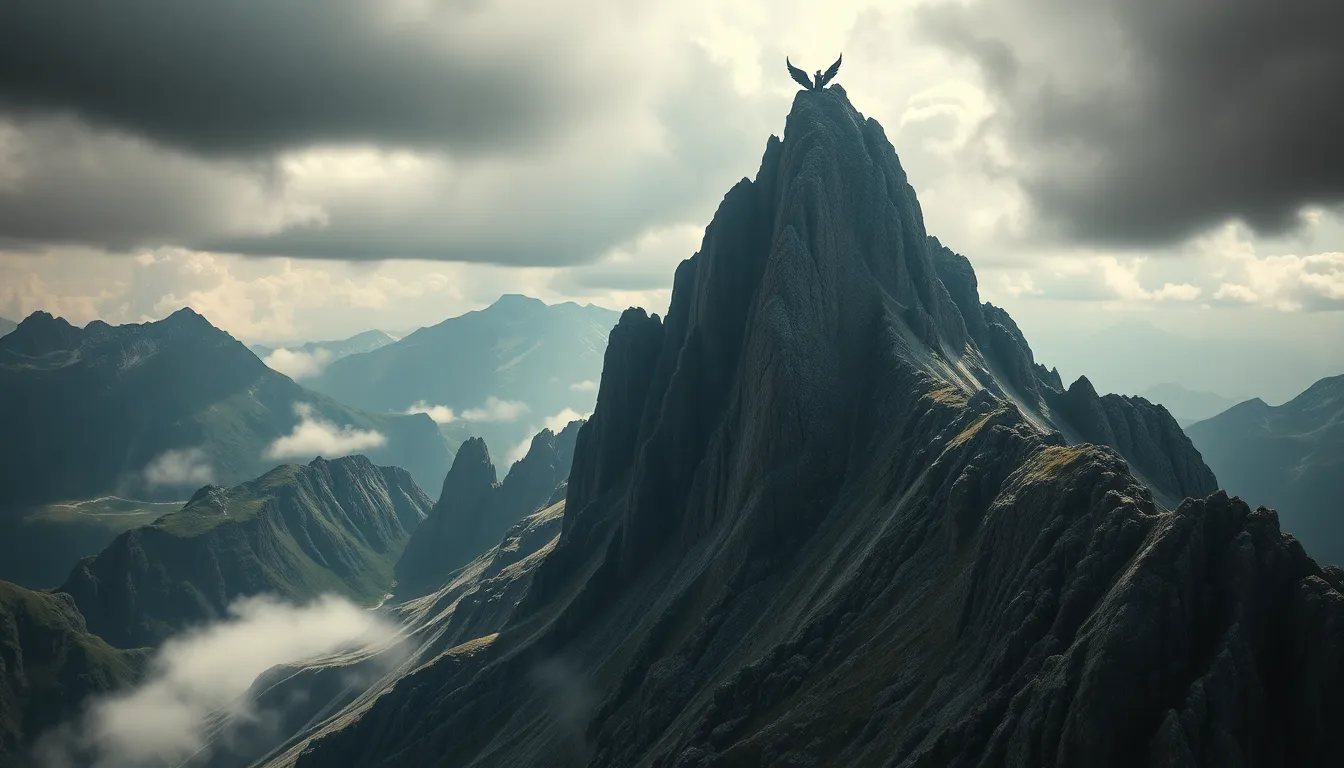The Mythical Peaks: Climbing to Sacred Heights
I. Introduction to Mythical Peaks
Throughout history, mythical peaks have held a unique significance in various cultures around the world. These towering formations are not just geographical landmarks; they embody the spirit of traditions, beliefs, and the human quest for understanding the divine. This article delves into the cultural importance of these sacred mountains, explores the intersection of myth and climbing, and reflects on the physical and spiritual challenges faced by climbers as they seek to conquer these revered heights.
II. The Cultural Importance of Sacred Mountains
Mountains have long been regarded as sacred spaces in many religions and mythologies. They often symbolize a connection between the earth and the heavens, serving as places where mortals can encounter the divine.
A brief overview of the historical context reveals how civilizations have revered such peaks:
- Mount Olympus: In ancient Greek mythology, Mount Olympus was considered the home of the gods, a place of divine assembly and power.
- Mount Sinai: In Judeo-Christian traditions, this mountain is significant as the site where Moses received the Ten Commandments, representing a pivotal moment in religious history.
- Mount Fuji: As a sacred symbol in Japanese culture, Mount Fuji is associated with beauty, spirituality, and artistic inspiration, often depicted in traditional art and literature.
III. The Intersection of Myth and Climbing
Every mythical peak is shrouded in legends and folklore, contributing to its allure. For climbers, these stories enhance the experience of ascent, turning a physical challenge into a spiritual journey.
The influence of these myths manifests in modern climbing culture:
- Climbers often seek to connect with the spirit of the mountain, respecting the traditions and stories that surround it.
- Some climbers engage in rituals before their climbs, invoking the protection of the mountain spirits.
IV. Preparing for the Ascent: Physical and Mental Challenges
Climbing mythical peaks requires extensive preparation, both physically and mentally. Climbers must adopt rigorous training regimens that include:
- Cardiovascular fitness: Running, cycling, and swimming to build endurance.
- Strength training: Focused exercises targeting core strength and climbing muscles.
- Technical skills: Practicing climbing techniques and safety protocols.
Equally important is the mental preparation required to face the fears and uncertainties of high-altitude climbing:
- Visualization techniques: Imagining successful climbs to build confidence.
- Mindfulness practices: Engaging in meditation to foster a sense of calm and focus.
V. Notable Climbs: Stories of Adventurers
The stories of climbers who have tackled sacred heights are both inspiring and revealing. Many climbers recount profound experiences during their ascents:
- John Muir: Known for his deep connection to nature, Muir’s climbs often intertwined with a sense of spirituality, emphasizing the sacredness of the landscapes he traversed.
- Junko Tabei: The first woman to summit Mount Everest, Tabei spoke of the spiritual significance of climbing, viewing it as a way to connect with the mountains and their stories.
Personal accounts detail how these climbs transformed their understanding of nature, self, and spirituality.
VI. Environmental and Ethical Considerations
The impact of climbing on sacred sites poses critical environmental and ethical questions. The increasing popularity of these climbs raises concerns about:
- Erosion and habitat disruption: High foot traffic can damage delicate ecosystems.
- Cultural disrespect: Ignoring local customs and beliefs can lead to tensions between climbers and indigenous communities.
Responsible climbing practices, such as following Leave No Trace principles and engaging with local guides, are essential for the conservation of these sacred places.
VII. The Spiritual Experience of Climbing
For many climbers, the ascent is not merely a physical challenge but a spiritual journey. The role of spirituality can be profound:
- Climbing rituals: Many climbers perform rituals, such as offerings or prayers, to honor the mountain spirits before beginning their ascent.
- Moments of reflection: Reaching the summit often brings feelings of awe and connection, prompting climbers to contemplate their place in the universe.
VIII. Challenges and Risks of Climbing Mythical Peaks
Climbing at high altitudes presents numerous dangers, including:
- Altitude sickness: A serious risk that can affect climbers as they ascend.
- Unpredictable weather: Sudden storms can create hazardous conditions.
Rescue operations and safety measures are critical components of high-altitude climbing, ensuring that climbers are prepared for emergencies.
IX. Future of Mythical Peaks in Climbing Culture
The landscape of adventure tourism is evolving, with emerging trends influencing the climbing of mythical peaks:
- Spiritual climbing retreats: Increasing interest in combining physical challenges with spiritual exploration.
- Eco-tourism: A growing emphasis on sustainable practices to preserve sacred sites while promoting tourism.
Balancing exploration with preservation is essential to protect these revered spaces for future generations.
X. Conclusion: The Legacy of Climbing Sacred Heights
Climbing mythical peaks is a journey that transcends the physical act of ascent. It embodies a search for personal meaning, connection to nature, and respect for cultural traditions. As climbers engage with the adventure and reverence of these sacred heights, they contribute to a legacy that honors both the mountains and the stories they hold.
Readers are encouraged to explore not only the thrill of climbing but also the rich tapestry of myth, culture, and spirituality that these mythical peaks represent.




